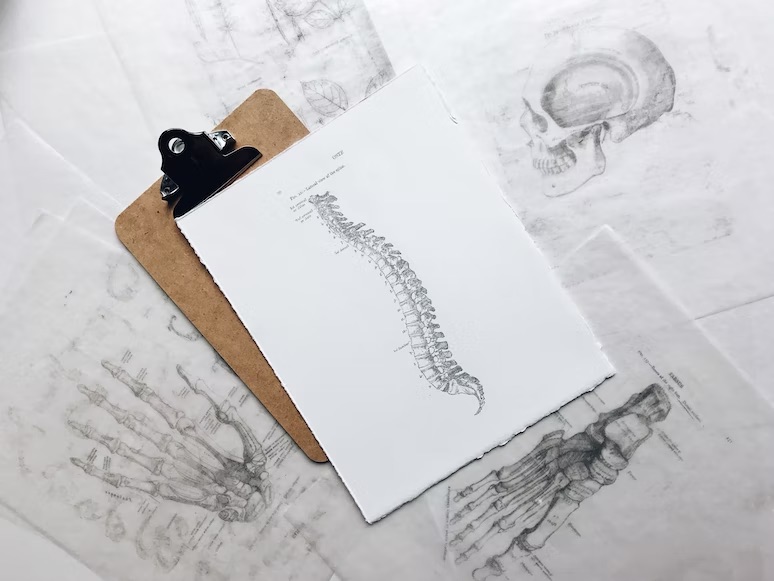Lower back pain is extremely common, with over 80% of the population suffering from it at least once during their lifetime. Most cases are nothing major, and usually the result of muscle strain, injury or overuse. However, lower back pain can also be linked to a condition of the spine, most commonly:
- Spinal stenosis
- Degenerative disc disease
- Herniated Disc
- Spondylolisthesis
- Osteoarthritis
Less common conditions that can cause lower back pain:
- Fibromyalgia
- Spinal Tumours
- Sacroiliac joint dysfunction
- Piriformis syndrome
These disorders can also involve chronic symptoms of back pain.
Symptoms of Lower Back Pain
Besides the obvious general lower back pain , here are some of the other indicating symptoms of lower back pain:
- Dull, aching pain – this is as opposed to a stinging, sharp or burning sensation in the muscles in the lower back area.
- Pain the travels to the buttocks, legs and/or feet. – In some cases, lower back pain can be coupled with a sort of burning or shooting pain which travel down the lower half of the body.
- Pain that is prolonged by sitting – sitting puts pressure of the discs which can result in lower back pain, or can worsen lower back pain. Walking or stretching can alleviate these symptoms, but sitting down can make them worse
- Pain which feels better when changing position – some positions can feel more comfortable than others when it comes to lower back pain, depending on the type and the severity. How the pain and the symptoms change with different positions can help to understand the source of the pain.
- Pain which is worse when waking up and better after moving around – Many people who say they experience lower back pain complain of it being worse when they wake up in the morning. This is because you have not been moving round in the night and your back muscles have seized up and the blood flow has naturally decreased. The pain can also be down or aided by to the quality of the mattress and pillows, in some cases. However, many of the same people find that getting up, stretching and walking around can relieve the symptoms.
Common Medical Treatments for Lower Back Pain Include:
Muscle relaxants
This type of medication acts as a depressant for the central nervous system to then increase the mobility of the tense muscles. This aims to relieve pain caused by muscle spasms or muscle tightness. This medication has no role in the pain management of chronic pain, but are widely prescribed for acute back pain. Muscle relaxants can be taken in conjunction with over-the-counter pain relief medications, and are used for short term pain management.
Back braces
In some cases, some people find that a back brace effectively helps with pain relief and can provide comfort where needed. Research and evidence has suggested that using a inelastic, corset-style brace, which is to be worn daily, can speed up the healing process, particularly after surgery
Narcotic pain medication
These are also known as opioids or painkillers, alter your perception of pain by weakening the pain signals sent to the brain. Most of the time, Narcotic medications are used for treating short-term, but intense pain – after an operation, for example.
Epidural steroid injections
This injection involves administering a steroid directly into the outer part of the dural sac,w something which surrounds the spinal cord. An x-ray (live), known as a fluoroscopy, is used to guide and aid the need to the correct area. The injection aims to temporarily ease pain but reducing the inflammation around the compressed nerve root.
Non-medication treatments for lower back pain
Massage therapy
Massage therapy, concentrated on the lower back, can help to relieve the muscle spasms can may be causing or contributing to your back pain. Meanwhile, massage therapy also increases blood flow to the lower back and ultimately speeds up the process of healing by restoring nutrients and oxygen to the damaged muscles.
Acupuncture
Acupuncture is inspired by ancient Chinese medicine. It aims to stimulate points in the body by placing thin needles into the skin for around an hour long session. Acupuncture has shown evidence of providing pain relief and healing for some people.
Manual Manipulation
A chiropractor, physiotherapist or other healthcare professional will make physical adjustments to your spine in order to hopefully improve your mobility and reduce any stiffness you are suffering from, as well as discomfort or pain. This will involve hand thrusts of a variety of speeds and force being applied to adjust the spinal structures. This has been found to work well as a form of pain relief for lower back pain.
Meditation
Meditation in general aims to relax the mind and the soul, helping to reduce the perception of pain. It can also help to reduce depression, anxiety, sleep problems and other complications that may come with dealing with chronic pain.
Surgery
In some cases, lower back pain may require surgery. Surgery may be considered for persistent, chronic and/or severe lower back pain. It will also be considered if about 6-12 weeks of non-surgical treatments have not helped alleviate the pain to a high enough standard. It is usually the patient’s decision to have surgery on their back, but in some cases immediate surgery will be performed when deemed necessary.
If you need surgery and are thinking about going privately, be sure to compare health insurance policies to get the best deals and plans out there.


